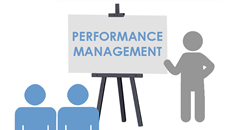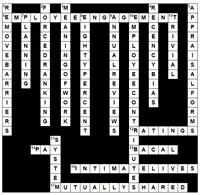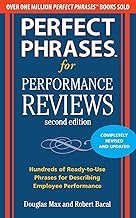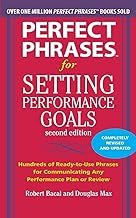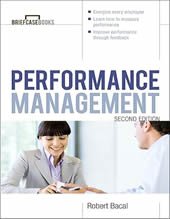Uses of the Job Description & Job Analysis
By Amarendra
Bhushan
Summary: Many companies and managers use job descriptions and job analysis to set employee goals and objectives, so they are tied into the needs of the work unit or company. In this article, you'll learn what job descriptions (and job analysis) are, their uses and applications, and how they can be used to improve performance.
What is job analysis? Before we can discuss job descriptions, it is important to understand the distinction between descriptions and specifications.
Job analysis is the combination of job descriptions and job specifications. For simplification purposes, "specifications" are the skills and background necessary to perform the responsibilities of the job. Since specifications are often a matter of conjecture and/or judgment, we have often advised that they not be listed on a job description and, if they are, that they have been determined by more than one person with the help of a professional analyst.
(An example is pertinent: Too often we've seen "Bachelor's Degree required" written on a job description, and just as often a bachelor's degree is not necessary to do the job. However, three years' experience in the particular position may indeed be necessary. Even then we suggest that the specification be listed as "3-5 years experience required." Always leave yourself "working room." The former, i.e., B.A., may be "discriminatory;" the latter is acceptable.)
What is a job description? A job description is "simply" a list of responsibilities and functions that are required in a particular position. (Job descriptions are often called position descriptions, and more appropriately so because like jobs can be combined into one description, i.e., clerk, secretary, executive secretary.) Each responsibility should start with a verb which describes the activity. These verbs should be "standardized" or understood by those using the descriptions and the person doing the job.
Some examples of the more commonly used verbs are: analyzes, approves, authorizes, conducts, controls, coordinates, develops, evaluates, expedites, inputs, maintains, operates, performs, plans, recommends, schedules, supervises, trains, and verifies. There are hundred of such verbs and by using such terms that most people understand, one minimizes the chances that the responsibilities will be misinterpreted or misunderstood.
How do we get the information? Usually, especially for exempt positions, information about a position is obtained by interviewing the incumbent. For nonexempt positions, interviewing might take place, but usually the information is obtained through the use of a questionnaire.
The questionnaire form cannot be duplicated on this page, but the contents are as follows:
Name:
Title:
Supervisor's Title:
Branch/Department:
In a brief statement, describe the basic purpose of your job. Why does it exist?
What are the most important duties of your job and what percent of your time do you spend on each? Answer what the responsibility is, how it is performed, and why (the desired results of the performance). Additional Responsibilities: List all "secondary" responsibilities or tasks that you perform.
What are the necessary equipment, instruments, and/or materials you use to perforn your job, and how frequently do you use them? Assignment of Duties:
( ) Who assigns your work? (Names and titles)
( ) When are your asisgnments made?
( ) How are assignments given. e.g., written, oral, etc.?
( ) Who reviews and approves your work?
Decision-Making
( ) Describe the specific decisions your are required to make in performing your job.
( ) What kinds of decisions must be referred to your supervisor/manager?
Reporting/Record Keeping
( ) What records or reports are you accountable for?
( ) For whom and what purpose are they kept?
Supervisory Responsibilities
( ) Do you supervise other employees?
( ) If yes, how many and what are their job titles?
If you were promoted, what type of educational training, job-related experience or other abilities would your replacement need? How much time would be needed for the training or experience (6 months, 1 years, 2 years, etc.)?
While most answer this questionnaire seriously, periodically someone will break the monotony of seeing "how important" various job are by listing, "Primary Responsibility = Making coffee." "Why does your job exist? = Because I'm the only one willing to do it." "Who supervises you? = Everybody." "How long would it take to train a replacement? = Regular coffee, 1 day; decaf, 1 day; espresso, 2 years plus a B.A. in coffee management and grounds."
Do not be surprized if some employees, especially in a large company, do not know who their supervisor is. It's one of the reasons the question is put at the top of the form. And, the answer or lack of an answer sometimes points to real management problems such as whu performance reviews are six month late in being done.
Also, do not be surprized if the responsibilities listed are different than the perception of the job by a supervisor or manager. Quite often we find employees assuming responsibilities and authority which is not theirs: it's how mini-empires are built.
We actually look for such inconsistencies, and when time permits we do so by have the immediate supervisor answer the same questionnaire for the position, then compare the answers.
How long does it take to "do" a job description? The employee and supervisor may take up to an hour (sometimes more) to write a meaningful job description. When we do have supervisors writing descriptions for all subordinates, we often give as much as two weeks to do them so that boredom doesn't overcome the supervisor and s/he gets sloppy toward the end of the process. It takes another hour, sometimes up to three hours, to "analyze" and verify the answers. And, it takes another half-hour to an hour to put the answers into a usable format (see the sample description below). Therefore, and perhaps one of the reasons why so few companies write and maintain them, it can take as much as four hours per description. (The next time a compensation analyst tells you that the fee for setting up a compensation system would be $40,000-$60,000, you'll know part of the reason why.)
How do we use the job description? There are many uses for the job description. The usual primary reason is to establish wage and salary ranges and grades. Before one can use a salary survey, one must know that apples are compared to apples. Salary surveys are always based on descriptions and specifications. Therefore, we use descriptions to gain equity in compensation, i.e., paying what the job is worth. (Paying what the incumbent is "worth" is a matter for another article...on performance evaluation. Job evaluation with job descriptions is meant to judge what is done, not how well.) Because one may reach equity, there is less of a chance for discriminatory pay policies, just one more reason why job descriptions are important.
A second use is in the performance appraisal. Too often, during a review, an employee will say, "I didn't know that was expected of me." With a job description signed by the employee, that excuse cannot be made.
Scary as it may sound or appear, some of our clients actually do give the job description to job applicants, job applicants who are seriously being considered for a position. Here again, the applicant who gets the job can't come back after several months and say that s/he didn't know that that was a responsibility. (Of course, descriptions must be updated as the job changes: in today's electronic age, that may well be up to four times a year.)
Just ten years ago, most writings about job evaluation stated that the process existed to "systematically compare jobs in an organization in order to offer a solution to the problem of pay inequity." Now, in part thanks to laws and the litigous nature of the workplace, we know that there are several uses, often "protecting the company" from claims being primary among them.
So, what's a job description look like when it's done? I am only going to reproduce one here, this from a bank, used because banks are so nicely structured and have such a great history of having descriptions. But, it should be noted that the job description adds order, if not more structure, to structure...and that's not bad in a chaotic world.
--------------------------------------------------------------------------------
POSITION: SENIOR ACCOUNTANT Rev. 8/31/95 REPORTS TO: VP Controller
PRIMARY FUNCTION: External reporting including SEC forms 10Q & 10K, OTS TFR, and the Bank's audited financial statements. Maintains the Bank's departmental budgeting system. Performs complex month close procedures including testing interest income and expense reasonableness and accounting for MBS investments. Performs special projects as assigned.
A. Departmental Responsibilities
Operational Accounting
a. Performs monthly interest income and expense reasonableness tests.
b. Accounts for monthly P&I payments on mortgaged-backed securities.
c. Updates monthly departmental budget templates.
d. Reviews fixed asset schedules quarterly.
e. Reviews monthly back reconciliations.
f. Reviews month-close procedures and performs a detailed analytical review.
g. Updates operating expense budget bi-monthly.
Financial Reporting
a. Conducts quarterly TFR reporting.
b. Prepares SEC forms 10Q and 10K.
c. Completes schedules required for quarterly report to shareholders.
d. Prepares financial statements for the quarterly report to shareholders.
e. Completes templates for investor publications such as Moodys, S&P.
f. Responsible for completing the Bank's audited financial statements and annual report.
Other
a. Updates risk assessment requirements for internal audit on an annual basis.
b. Accounts for executive retirement plans bi-annually.
c. Updates and revises loss study in July and December.
d. Monitors and controls expense items as part of analytical review of month-end financials.
e. Maintains specific internal control procedures within the department.
f. Conducts daily wire procedures and implements and changes needed to wire processing.
Information Systems
a. Manages all service bureau maintenance and documentation requirements.
b. Performs various computer-related tasks including: systems problems, enhancements or conversions with service bureau; addresses various ISC related problems.
c. Administers Bank's remote reporting requirements.
Financial Reporting
a. Prepares the monthly Board Report and FRB Collateral Report.
b. Assists in preparing for the Bank's annual financial statement audit.
Cash Management
a. Manages daily liquidity needs.
Other duties as required.
Meet Amarendra Bhushan, A leading Strategic Human Resource Consultent, MBA from American university of athens, greece, also editing The European journal of NRI finance magazine TRIBUNE).
As one of the leading article writer, and corporate hotel professional. Advisor to various organizations and hotels. He is an elected member of south Indian hotel and restaurant federation. Now staying at city of Athens Greece.
Amarendra bhushan Dhiraj Athens, Greece PH-0030-6947667507 [email protected]
